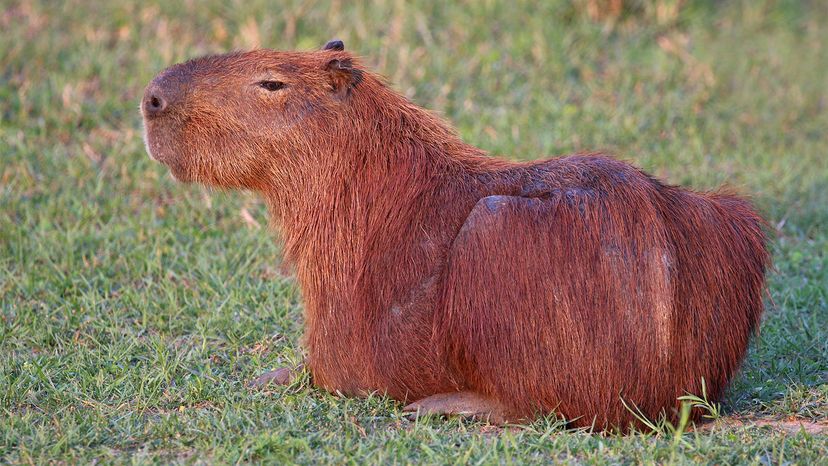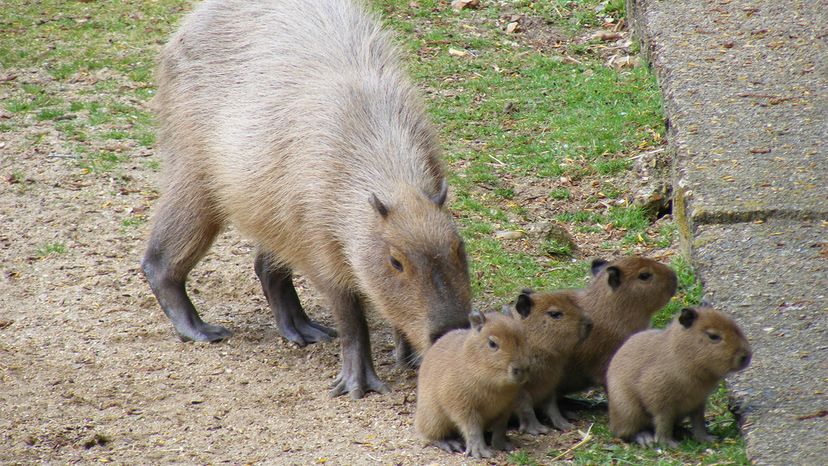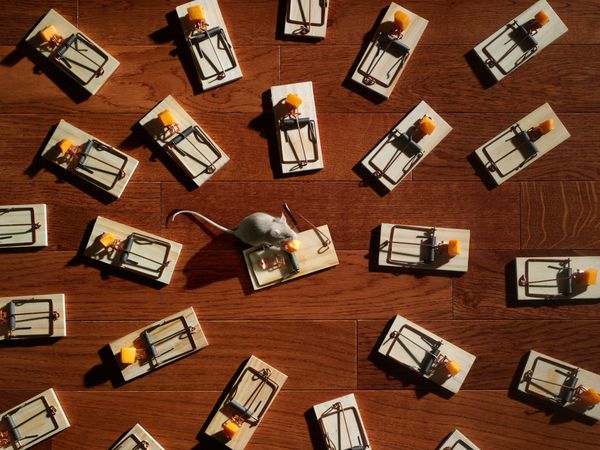
For some reason, not everybody loves rodents — maybe because a few species are pretty persistent in their efforts to share our homes with us. And rats have long been credited with spreading the bubonic plague, which killed millions of people in medieval Europe and Asia.
But the order Rodentia is vast — in fact, a whopping 40 percent of all mammal species are rodents. Which means the Norway rats you glimpse in the shadows of the subway tunnel and the house mice setting up a nursery in your attic are both rodents, but so are beavers, guinea pigs, porcupines, chipmunks and nutria. There's a lot to love there, but maybe none so charismatic as the world's largest rodent: the capybara.
Advertisement
Charisma is, of course, very subjective. Picture this, though: a giant pig-like, semi-aquatic rodent about the size of a large dog whose eyes, ears and nostrils sit basically at the top of its head. They also have these weird, tiny webbed feet that look kind of like hooves. They are vegetarian and eat between 6 and 8 pounds (between 2.7 and 3.6 kilograms) of grass each day, in addition to their first poop of the morning. That poop contains lots of protein from the microbes that have been feasting on the contents of their intestines all night; eating it allows them to get nutrients out of the food their system didn't absorb the day before. Fascinating.
Capybaras (Hydrochoerus hydrochaeris) — and, just to get this out of the way, the plural of the word capybara is indeed capybaras, not capybara — are native to Central and South America, where they're doing extremely well. The International Union for Conservation of Nature (IUCN) considers them a Species of Least Concern, even though they serve as a prey item for everything from anacondas to jaguars. Capybaras need to stick pretty close to water — a wetland, estuary, river, etc. — not only because they need to keep their skin moist, but also because they require access to the grasses that grow near waterways. About 80 percent of their diet comes from five different riparian grass species.

Advertisement
